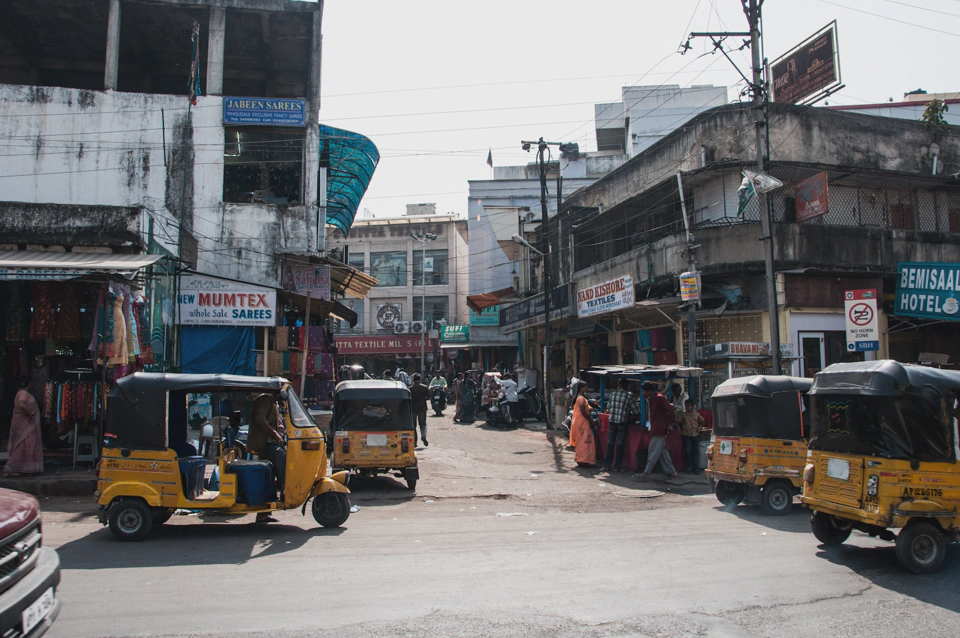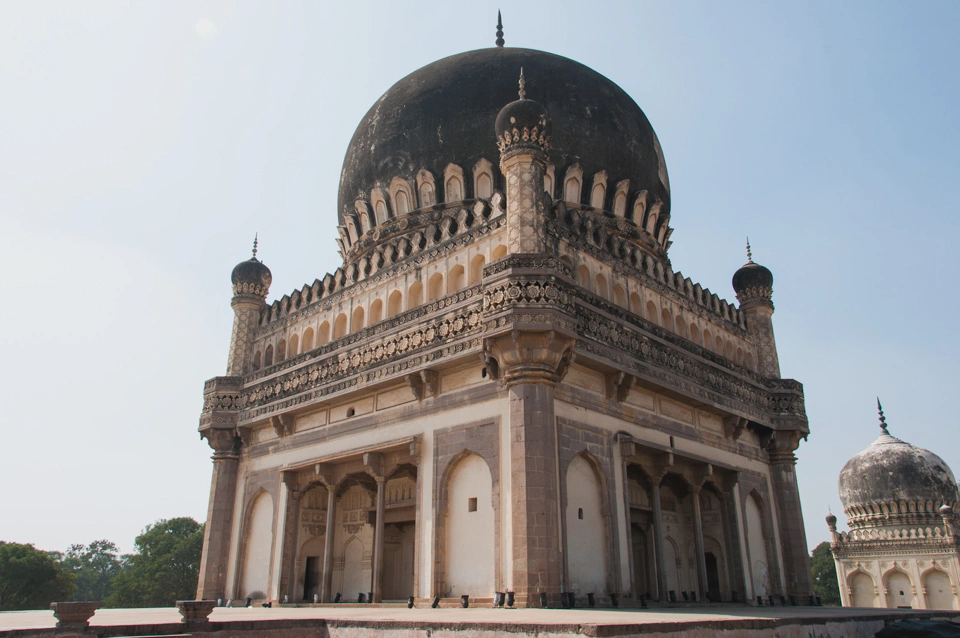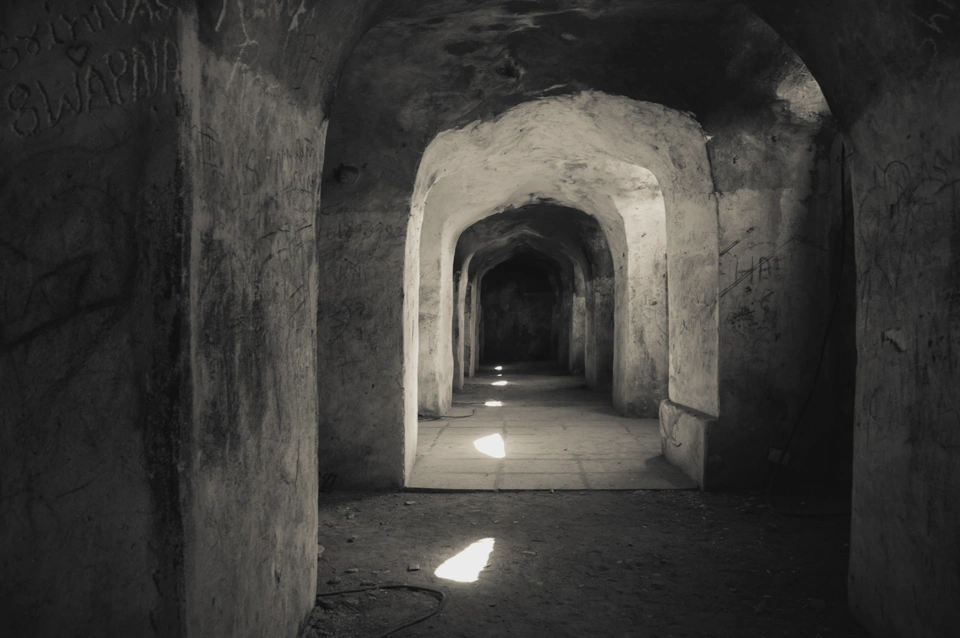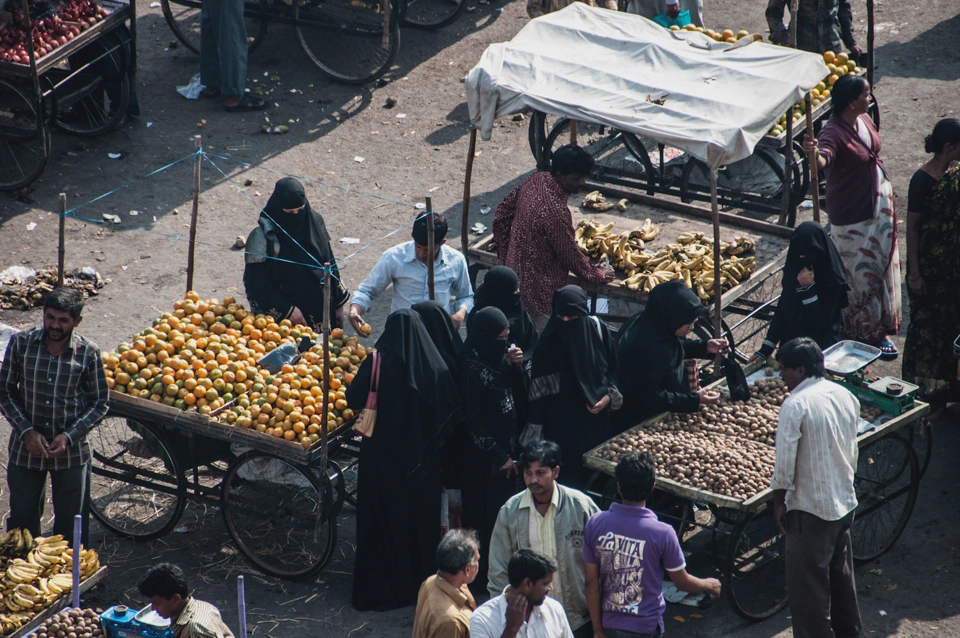More than a year ago I had the opportunity to travel to Hyderabad, India for a week. Hyderabad is not your typical tourist spot. It is most known as a technology hub which means that many international technological companies have a presence there. This is one the reasons you won’t see fakirs, sadhus, cows, elephants, tigers or monkeys mentioned here.
I arrived in Hyderabad in the middle of the night. A driver, who we may call Amit, was waiting for me. After greeting him I realized two things: that he was the first person to call me “sir” and that we were going to have to make an effort to understand each other.
We got in the car and on our way to the city. It was three past midnight and there were barely any vehicles on the road. At one point I saw a truck turned over close to the highway. I mentioned that to Amit and, smiling, he said that it was common. A couple of miles later I felt tempted to gather more info and I asked him a few more questions about India and about him. Half the time I got answers to questions I hadn’t posed and the other half the answers were distantly related to my questions. And if I asked him to repeat the answer he would answer something completely different again. After I learned to let go I found it interesting to see what random bits of information would come out of him and whether I would be able to decipher them or not.
After a good night of rest I headed to the office. I was staying at an apartment complex with lots of guards and not much going on inside the complex but after I crossed the doors to the street I felt engulfed by a wave of chaos. There was clutter, dust and litter everywhere and with sidewalks made of dust and sand. Indian drivers appeared to have developed a morse language that they continuously exercised through their car horns. In fact I saw school buses and other vehicles with messages like “Please use horn” on the back. And, in terms of aromatic scents, let’s say that dust permeated everything. Luckily my apartment was only two minutes away from the office and the sedative of being in India was powerful enough to keep my sense shields up.
I spent the rest of the week alternating between the office and the apartment, eating a lot of curry and with my eyes and ears in DEFCON 1 because of mosquitos. Besides that it was almost like being in Europe.
Then the weekend arrived.
I had meticulously prepared an itinerary. When I met Amit on Saturday morning, I shared it with him and we got on our way.
You may have seen videos of Indian traffic on Youtube. That’s one way of experiencing it. Another way is to be a sidewalk observer like I was during the week. But the deepest level of engagement with Indian traffic is to be inside a car in the front passenger seat. I’m writing this more than a year after that Saturday and I still shiver when I remember the first couple of hours in the car. I still remember the feelings of imminent crashes once or twice before every traffic light. And I also still remember the futility of frantically trying to step onto the non-existent brakes of my passenger seat. If you like roller coasters and horror houses you will like enjoy driving in India.
The first place on the itinerary was a temple that was less than twenty minutes away from my apartment. However after 45 minutes driving I started to worry and I pointed out that we appeared to be facing a lot of traffic. Amit said that it wasn’t bad at all. Confused I then tried a more direct approach and I asked him how far we were from the temple. He replied that we weren’t far. I decided to shun the nagging little voice in my head screaming about the clear evidence of miscommunication and the increasing chances of going to the wrong place. Finally, one hour after we left the apartment and, with the planner and methodical Juan biting his nails, we arrived to a temple. It was a gorgeous white temple covering a big hill, it was full of people and it didn’t look like the temple we were supposed to be at. I had no idea where I was but I felt adventurous and I played it cool. I left my shoes and belongings with the driver, not by my own choice, and I went to visit the temple which I really enjoyed. The fact that I was walking barefoot and had no camera, food supplies or water made me feel like I was one of the many pilgrims that regularly travel to the temple from all over India.
Afterwards I talked to Amit and I understood what was going on. My Indian friend had already made up a list of places to visit on his own and, basically, ignored my list. It was clear that there was no malice and that he had done that tour before so I went along with his plan.
Our next stop was Salar Jung Museum. It was like most museums I had seen before except for the fact that there were, literally, streams of school kids randomly entering the rooms I was in, getting between the showcases and me and then leaving as quickly and cleanly as they had came. Most of the groups were holding hands so they looked more like chains or snakes from Snakes.
After the museum we went for lunch at a restaurant that Amit recommended and we had delicious chicken kebab with chutney and naan bread. Just remembering it is making me drool…
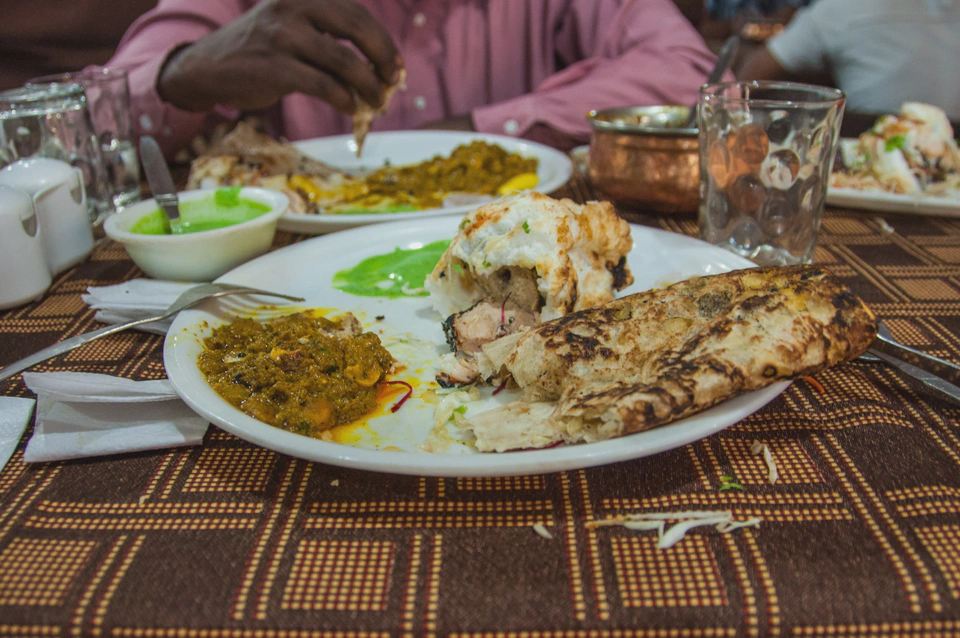
In the afternoon we went to Charminar, a mosque built in 1591 and one of Hyderabad’s better known landmarks. The structure was impressive but what really got my attention was the amount of people, cars and life around it. It put the chaos on the streets near the office in perspective. According to Amit the amount of people there “is normal. More busy with muslim celebrations”.
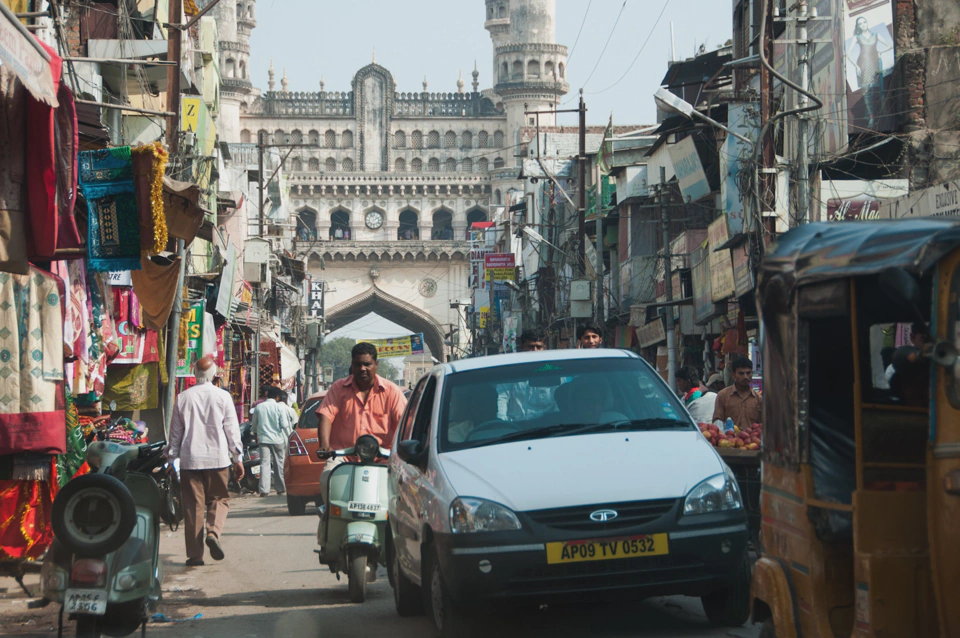
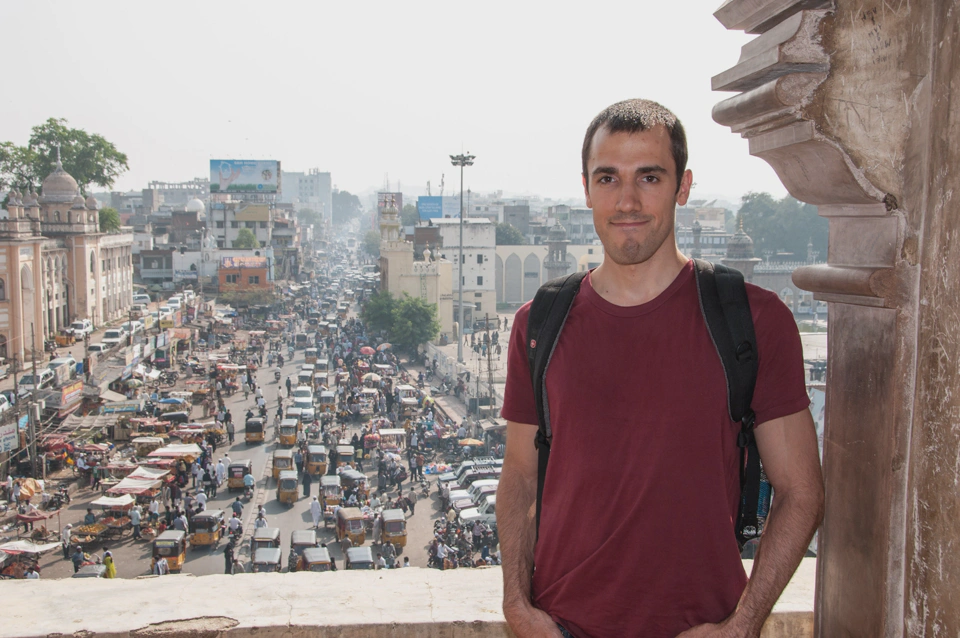
After Charminar we went shopping and then home to rest.
If on Saturday we had focused on city center landmarks, on Sunday we would focus on the outskirts of the city.
We started the day by visiting “Qutb Shahi Tombs”, a complex of seven tombs built around 1500.
The main attraction are the seven big buildings built in the 16th century. Each building houses a tomb, each tomb looked a bit different than the other and they all looked like they could do with a little bit more funding and maintenance. I saw about a dozen of people around the place so it was quite relaxed compared with the chaos of the places from the previous day.

After Qutb Shahi Tombs we went to the nearby Golconda Fort. The fort was built around the 12th century and it was inhabited for several hundred years. Given its age it’s still pretty well conserved. I have seen castles and forts in Europe in a worse state.
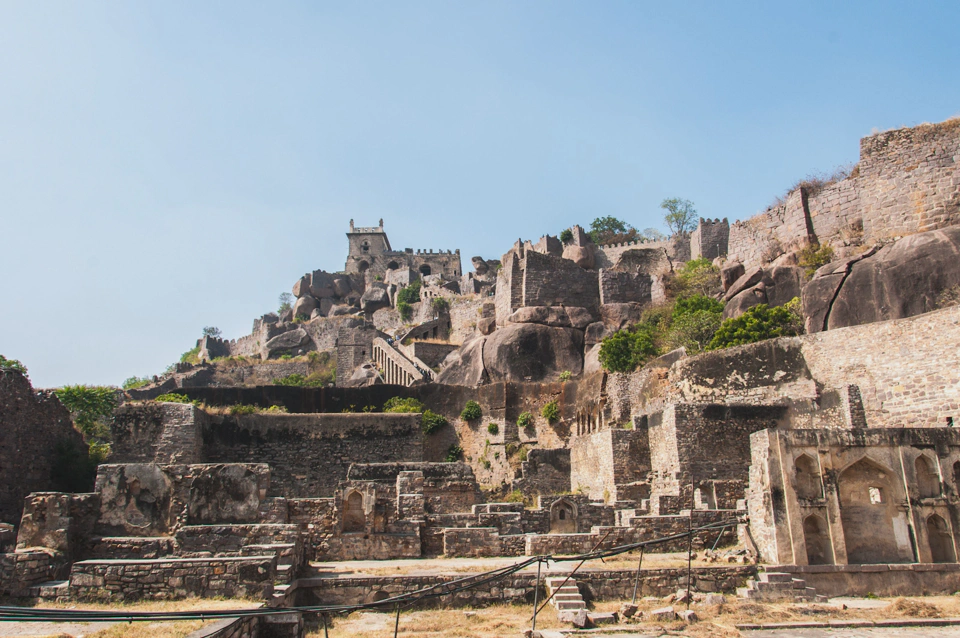
My favorite game since I was a kid is Dungeons & Dragons which is generally played in medieval settings. That makes places like this get me really excited. The fort was built on top of a generous hill. After a considerable amount of time navigating the labyrinthian corridors and randomly ending up in rooftops or facing dead ends I arrived to the top. On good days I imagine that you have great panoramic views with clear skies and bright colors. While going down the hill I met a couple of Jewish doctors that had recently moved to Hyderabad and we shared impressions about the city and India. Besides people trying to sell me overpriced souvenirs and take advantage of my poor bargaining skills the Jewish brothers were the only people who approached me during the weekend.
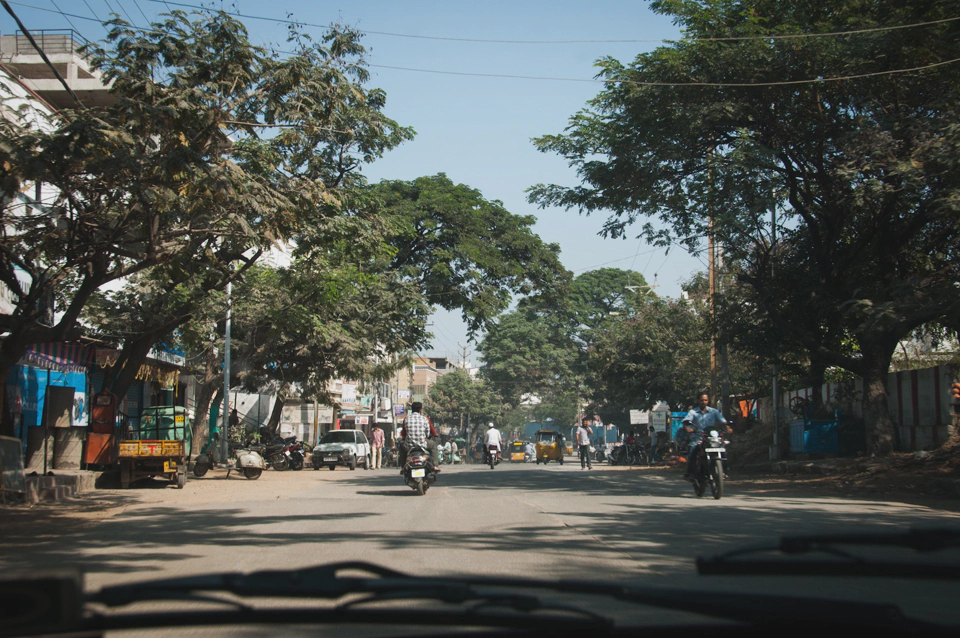
Hyderabad was more chaotic, noisy and dirty than I am used to. Compared to the nearly empty streets of Dublin and the definitely empty suburbs of Mountain View in the US, Hyderabad was full of humanity. I met two types of Indians: really courteous and warm people who reminded me of my Japanese friends and people who were trying to get my money. I thought salesmen were pushy in the US but this trip broadened my perspective.
When you visit another country you normally experience it very differently than your own. This time, however, I could almost touch a solid wall made of glass between me and the real Hyderabad. At the office I felt like at any other Google office, the only differences being heavy doses of Indian accent and lots of nodding. At the apartment complex I was surrounded by foreigners. And when I was sightseeing Amit was very protective and he did all of the talk with other people. I didn’t have any meaningful interaction with “normal” Indians. In a way this wall reminded of Buddha and his feeling of being disconnected from the real world while in his parents’ palace.
